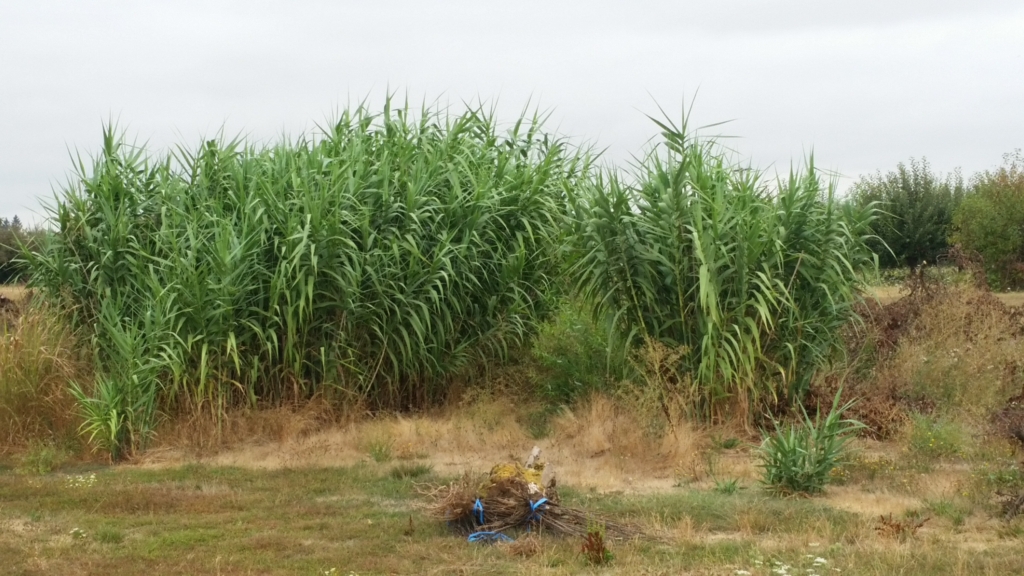Giant Reed
Arundo donax
Plant Description
Giant reed is a fast-growing perennial grass that has escaped cultivation in some areas of Oregon. There is concern that it could spread rapidly if introduced along the Willamette River. Native to the Mediterranean, it can reach over 20 feet tall, forming dense, bamboo-like stands that outcompete native vegetation along rivers, wetlands, and irrigation ditches. These thick stands reduce habitat quality for fish and wildlife, increase erosion by displacing deep-rooted native plants, and alter stream hydrology. Giant reed also contributes to higher wildfire risk as its dry stalks ignite easily and burn intensely. Because it spreads aggressively through rhizomes and stem fragments, Arundo donax is difficult to eradicate once established, making prevention and early control critical for protecting Oregon’s waterways and riparian ecosystems.
Plant Details
| Life Forms | |
|---|---|
| Habitats | |
| ODA Listing | |
| Soil and Moisture Conditions | |
| Suggested Actions | |
| Shade Preference | |
| Mature Height | 20' |
| Distribution | It has been widely planted and naturalised in the mild temperate, subtropical and tropical regions of both hemispheres, especially in the Mediterranean, California, the western Pacific and the Caribbean and is considered invasive in North America and Oceania. It forms dense stands on disturbed sites, sand dunes, in Wetlands and Riparian areas. |
| Control | If found, please report to OregonInvasivesHotline.org 1. Physical Management Options: Giant reed can be cut and the rhizomes can be dug up. Physical control is difficult because it can re-establish from remaining seeds or rhizomes. Frequent mowing is sometimes effective for the control of giant reed. 2. Biological Management Options: At this time, there are no known biological controls for giant reed; although, goats are known to forage on many types of emergent vegetation. |
| Disposal Methods | Can burn piled material onsite. Canes are cut at the ground level, removed and mulched to small chips so no portion of the plant can grow back. |
| Reproduction and Spread | Giant Reed spreads vegetatively through both rhizomes and canes. Rhizomes produce new canes around the edges of clumps. Canes that end up lying on the ground can sprout new roots at each leaf intersection. Rhizomes and canes that break away during flooding events or other disturbance spread Giant Reed, typically downstream. |
| Introduced | Thought to be native to eastern Asia Date of U.S. Introduction Early 1800's Means of Introduction: Introduced for erosion control |
| Impact | Crowds out native plants species; reduces wildlife habitat; contributes to higher fire frequency and intensity; and modifies river hydrology |
| More Info |

